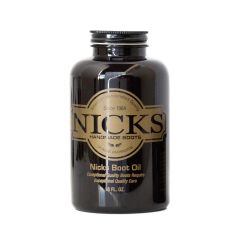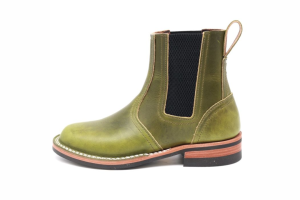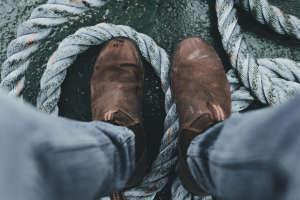Will Leather Work Boots Stretch?
Feeling a bit tight at first? A bit of pinching happening? Don't worry; a little bit is normal with new boots.
A lot of people feel a bit of pinching, a bit of rubbing, and take to the internet to ask will leather work boots stretch? They will, to a degree...but there's a difference between the normal stretching and settling that occurs with break-in and a common error people make with boots and shoes.
In other words, either you're just going through normal break-in or you bought the wrong size. So when people ask that question, what they're really asking is "did I buy the wrong size," not if their boots will stretch a bit as they wear them.
So, let's talk about how to tell the difference.
The Stitching, The Backstay, The Heel And The Blucher (What?!) Of Your Boots Will Stretch
There are several components of your work boots that are going to stretch a little - and in fact need to - as part of the break-in process.
Bear in mind they won't stretch much. They'll stretch a little and soften with use, and become supple as the get used to the shape of your feet. The amount they stretch can be measured in millimeters or fractions of them.
The stitching is going to loosen every so slightly. Again, not very much...but a little bit.
The heel and the backstay - it looks like a vertical stripe going up the back of the boot above the heel; maybe you got yours with a pull tab - have to get used to the shape of your feet and lower legs. They take a little time to do it, and you might get a raw heel in the process.
The other part of the boot that gets a lot of action in the break-in process is the blucher. The blucher is the corner of the upper where it attaches to the vamp. The vamp is the part of your leather boots or shoes that covers the toes; the blucher is where the vamp attaches to the upper.
So...how do you know it's these parts of the boot breaking in, instead of being the wrong size?
Normal Break-In For Leather Work Boots
Break-in is different for everyone. Some people take a few months to really get their leather work boots broken in to their feet, and others seem to past it within a week. That's going to depend on you.
With that said, here's what you should notice…
The heel and the back stay are going to be rigid. You may notice it rubbing against the back of your heel, especially right about the ankle. It might feel like a sharp corner is creasing in, and poking you. You might also get a bit of chafing.
That's normal. A lot of people will wear thicker socks, tape their heel or carry around adhesive bandages or moleskin during break-in periods just in case.
At first, the boot may feel a little tight, especially around the edges. If you notice they loosen a little over time, that's the stitching stretching, which is totally normal.
The other area where you're going to notice some pinching and a bit of unpleasantness is the blucher, the area where the upper meets the vamp. That bit of material has to stretch over and mold to your foot, so it's going to be a little unpleasant at first.
It's going to feel like it's pinching down on the side of your foot. Typically, you'll feel behind the big toe or your pinky toe. You might get it at both big toes, both little toes, or you might notice one of each.
This is normal. The first knuckle of the toes is the widest part of the foot; the leather has to stretch over it, and so you're going to get a little bit of pinching.
What Is Definitely NOT Part Of Breaking In Leather Work Boots
However, what is not at all part of the break-in process for leather work boots or shoes is when they are the wrong size for your feet.
What you're going to notice there is that the heel is too tight, and there is not enough room in the toe box for your feet. If you constantly feel the sides or the top of the toe box, you're wearing the wrong size of boots.
You're probably a half a size too small, or you're wearing too narrow a width. Believe it or not, boots are made in wider and narrower widths; a lot of people go through a lot of boots and shoes until they learn that.
Alternatively, if you have an inch or more of room ahead of your toes, or if your feet never contact the sides of the boot, or swim in the heel cup...your boots are too big.
And what can you do about it?
Well...you can stretch boots. There are boot stretchers you can order, or you can take them to a shoe repair shop and have the service done. However, you won't get more than a half-size in length or one size up in width; an 11.5 will never fit a size 13 foot, and you can't turn a B width into EE.
Boot stretching, if you had to do it, only works if you're close in size but just a little too big...but what's actually better is to get the right size of work boots to begin with. Every bootmaker's sizes are different, so it's important to try them on or be fit prior to purchase. That will guarantee the best fit.
So will leather boots stretch? Yes, they will. They stretch a little at break-in as part of the typical process, and they can be stretched if your feet grow or what have you...but it's better to have the right size than stretch boots that are too small for you.









